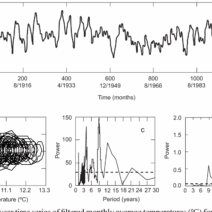In the realm of physics, the concept of a perfectly elastic collision serves as a pristine ideal, much like the elusive concept of a perfectly restored ecosystem in environmental discourse. Just as conservationists strive for a world where nature balances itself harmoniously, physicists grapple with the intricate dynamics of energy transfer during collisions. But the question arises: does a perfectly elastic collision always conserve kinetic energy?
To comprehend this phenomenon, one must first appreciate the fundamental definitions involved. A perfectly elastic collision refers to an event where two objects collide, and both momentum and kinetic energy remain conserved throughout the interaction. Picture two vibrant marbles of identical mass, each glistening under the sun, poised for a collision. When they strike, they do so like dancers engaged in a meticulously choreographed ballet, where every movement is precise, and no energy dissipates into the chaotic ether.
This contrasts sharply with inelastic collisions, where some kinetic energy is transformed into other forms of energy, such as thermal or sound energy. Imagine a car crash: the metal crumples, energy disperses, and the kinetic energy of the vehicles is not wholly conserved. Herein lies the distinction – an idealized instance in a perfectly elastic collision stands unwavering, akin to an untouched forest that flourishes without yielding to exploitation.
Exploring the physics behind this elegant collision brings us into the realm of laws governing motion and forces. The law of conservation of momentum dictates that the total momentum before and after a collision remains constant. This principle intertwines beautifully with energy conservation. In a perfectly elastic collision, both total momentum and total kinetic energy retain their initial values, allowing the objects to rebound with untouched vigor.
However, the perfection of such collisions is inherently theoretical. Real-world scenarios reveal that even the most seemingly elastic interactions possess nuances that lead to energy loss. Factors such as friction, deformation, and sound oftentimes seep into the essence of a collision, dissipating energy like a spillage of water on arid soil, never to return to its original state. Thus, while kinetic energy conservation reigns supreme in the ideal world of perfectly elastic collisions, the natural world frequently presents a gritty tableau of energy departing unceremoniously.
An intriguing metaphor to illustrate this interaction is to envision a game of billiards. When the cue ball strikes another ball perfectly on target, they bounce away in a flurry of kinetic energy and momentum that seems to radiate with precision. Yet, move closer to the reality of worn tables, and one can observe the feeble murmurs of friction and imperfect surfaces that contribute to energy loss. This analogy underscores a crucial aspect of nature – while the concept of perfect conservation dances enticingly on paper, reality often offers a more complex narrative where losses are an immutable part of existence.
A critical examination reveals several caveats surrounding the occurrence of perfectly elastic collisions. Ideal gases in motion provide a fascinating case study. Under certain conditions, when gas molecules collide with one another in a vacuum, the principles of elastic collisions can be observed, and kinetic energy appears obstinately preserved. Yet, as scientists delve deeper into macroscopic behaviors, they often unearth deviations from these ideals, reminding us that nature thrives in intricacies, unveiling a tapestry woven from the threads of imperfection.
Moreover, the realm of subatomic particles further enriches the discussion. Quantum mechanics often introduces scenarios in which collisions among particles can exhibit elastic aspects while redefining classical interpretations. Waves and particles are interlinked in ways that defy traditional understandings, resonating with the natural world in its grotesque beauty and often chaotic turmoil. Here, kinetic energy conservation can be discerned in particular contexts, suggesting that, while our classical understandings frame a limited view, reality burgeons beyond with enigmatic complexities.
Thus, the crux of the inquiry resides in recognizing that while perfectly elastic collisions epitomize scenarios where kinetic energy conservation reigns, they remain an abstraction illuminated under specific circumstances. In practical applications, ideal conditions seldom exist, akin to the pursuit of a sustainable future marred by complex human considerations and technological constraints. The quest for balance within ecological systems mirrors the quest for knowledge in physics; both dance delicately on the precipice of perfection, often disrupted by the harsh winds of reality.
To summarize, a perfectly elastic collision does indeed conserve kinetic energy under ideal conditions, embodying the essence of theoretical physics. Yet, when one steps into the real world, the specter of energy loss looms large. Fluctuations in momentum, the clatter of imperfect surfaces, and the unpredictable behaviors of nature conspire against achieving absolute conservation. Therefore, the inquiry beckons further reflection – perhaps the very act of searching for absolute truths within nature’s complex framework reveals more about the journey than the destination itself.
This interplay between idealism and reality enriches our understanding not only of physics but of our own journey towards sustainability and environmental stewardship. The elegance of perfectly elastic collisions, with their pristine conservation of kinetic energy, inspires hope. However, more importantly is the acknowledgment of our world’s inherent imperfections, where, much like in the pursuit of ecological balance, conservation often requires an acceptance of flux and a commitment to navigate through the complexities that define our existence.








